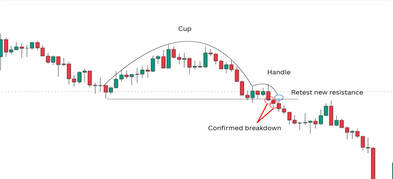Important Information
This website is managed by Ultima Markets’ international entities, and it’s important to emphasise that they are not subject to regulation by the FCA in the UK. Therefore, you must understand that you will not have the FCA’s protection when investing through this website – for example:
- You will not be guaranteed Negative Balance Protection
- You will not be protected by FCA’s leverage restrictions
- You will not have the right to settle disputes via the Financial Ombudsman Service (FOS)
- You will not be protected by Financial Services Compensation Scheme (FSCS)
- Any monies deposited will not be afforded the protection required under the FCA Client Assets Sourcebook. The level of protection for your funds will be determined by the regulations of the relevant local regulator.
Note: Ultima Markets is currently developing a dedicated website for UK clients and expects to onboard UK clients under FCA regulations in 2026.
If you would like to proceed and visit this website, you acknowledge and confirm the following:
- 1.The website is owned by Ultima Markets’ international entities and not by Ultima Markets UK Ltd, which is regulated by the FCA.
- 2.Ultima Markets Limited, or any of the Ultima Markets international entities, are neither based in the UK nor licensed by the FCA.
- 3.You are accessing the website at your own initiative and have not been solicited by Ultima Markets Limited in any way.
- 4.Investing through this website does not grant you the protections provided by the FCA.
- 5.Should you choose to invest through this website or with any of the international Ultima Markets entities, you will be subject to the rules and regulations of the relevant international regulatory authorities, not the FCA.
Ultima Markets wants to make it clear that we are duly licensed and authorised to offer the services and financial derivative products listed on our website. Individuals accessing this website and registering a trading account do so entirely of their own volition and without prior solicitation.
By confirming your decision to proceed with entering the website, you hereby affirm that this decision was solely initiated by you, and no solicitation has been made by any Ultima Markets entity.
I confirm my intention to proceed and enter this websiteA Starter Guide to Scalping Strategy
Scalping is a dynamic and thrilling trading strategy that focuses on profiting from small price movements over very short periods. Traders who use the scalping strategy, known as scalpers, look for opportunities to execute many trades throughout the day, each aiming for small, quick profits. Scalping might sound simple, but it requires fast decision-making, precise execution, and a deep understanding of market dynamics. With the right approach, however, scalping can become a highly profitable trading strategy.
What is a Scalping Strategy?

A scalping strategy involves making numerous small trades in a single day, profiting from minute price changes. Unlike long-term traders, scalpers focus on capturing small price movements that occur in liquid markets. Each trade may bring in a modest profit, but when executed consistently, these small wins accumulate over time. A key characteristic of scalping is the use of short timeframes—positions are typically held for seconds to minutes, requiring traders to act quickly and decisively.
Key Elements of a Scalping Strategy
To implement a successful scalping strategy, several key factors must be considered:
- Timeframe: Scalpers usually operate within very short timeframes. Trades are typically held for seconds or minutes, and speed is crucial. The ability to place trades swiftly within a single session is key to success.
- Market Conditions: Scalping thrives in liquid markets with low spreads. These conditions are often found in major forex pairs, stock indices, and commodities, which provide the liquidity needed for rapid trades. Scalpers rely on high-volume markets where prices fluctuate frequently, ensuring the availability of opportunities.
- Leverage: Given the small profits from individual trades, scalpers often use leverage to increase their returns. However, leveraging can amplify risks, so it must be used cautiously and with proper risk management strategies.
- Risk Management: Effective risk management is essential in scalping. Scalpers typically use stop-loss orders and take profits quickly to minimise losses. Understanding market trends and being aware of economic events can also help prevent significant downturns.
- Technology and Tools: Scalpers rely heavily on technology for fast execution. Advanced platforms with real-time data, automated trading systems, and indicators like moving averages, Bollinger Bands, and RSI are common tools. These help identify entry and exit points with precision, aiding scalpers in making quick, informed decisions.
The Pros and Cons of Scalping Trading

Advantages of a Scalping Strategy
There are several key advantages to using a scalping strategy:
- Quick Profits: Scalping allows traders to profit from even the smallest price movements, and by executing numerous trades per day, these small wins can accumulate into substantial returns.
- Reduced Market Exposure: Since trades are held for such short periods, scalpers are less exposed to the larger, more unpredictable market movements. This minimises the risk of substantial losses from major market shifts.
- No Need for Major Price Moves: Unlike long-term traders who wait for large price movements, scalpers can profit from even minor fluctuations. This makes scalping adaptable in various market conditions, whether trending or range-bound.
Disadvantages of a Scalping Strategy
While there are benefits, there are also challenges to using a scalping strategy:
- High Transaction Costs: Due to the frequency of trades, scalpers face higher transaction costs, including commissions and spreads. These can add up quickly and reduce overall profits.
- Mental Fatigue: The rapid pace of scalping can be mentally exhausting, as it requires constant focus and quick decision-making. This can lead to burnout for traders who don’t manage their time properly.
- Risk of Overtrading: The fast-paced nature of scalping can cause traders to impulsively execute too many trades, increasing exposure to risk. Maintaining discipline is crucial to avoid unnecessary losses. It is important to have a strict exit strategy and know when to avoid trading in unfavorable market conditions.
Effective risk management in scalping also means being prepared to exit trades quickly and respond to a sell signal to minimise losses.
Best Practices for a Successful Scalping Strategy

To get the most out of a scalping strategy, mastering specific scalping tactics and a disciplined scalping technique is essential for consistent results. Here are some best practices to follow:
- Choose the Right Broker: Opt for a broker with low spreads, fast execution speeds, and low commissions. Technology has made it possible for retail traders to access sophisticated tools and real-time data, making successful scalping more achievable.
- Focus on a Few Assets: Scalpers often focus on one or two assets at a time, allowing them to track price movements closely and make better-informed decisions.
- Use Technical Indicators: Scalping relies heavily on technical analysis. Popular indicators like moving averages, RSI, and Bollinger Bands help scalpers identify trends and pinpoint optimal entry and exit points. These tools are essential for making quick decisions during high-speed trading.
- Trade During Volatile Periods: Scalping works best during periods of high volatility, when price movements are frequent. Watching for economic news releases or significant market events can help you identify periods with increased market activity and higher chances of profitable trades.
- Stay Disciplined: The fast pace of scalping can lead to emotional decision-making. Maintaining discipline is crucial—following your strategy, managing risks, and avoiding impulsive trades can help you stay on track and avoid significant losses.
Managing Risk in a Scalping Strategy
In forex and other volatile markets, managing risk effectively is key to a successful scalping strategy. Scalpers must be aware of potential risks posed by economic events or news releases that could significantly impact the market. Using technical analysis tools like the MACD or moving averages can help identify opportunities and avoid false signals. Setting stop-loss orders and limiting position sizes can help mitigate potential losses.
Conclusion
To wrap it up, scalping is an exciting trading strategy that allows traders to profit from small price movements within short timeframes. By executing numerous trades per day, scalpers can turn these small gains into significant profits.
However, successful scalping requires discipline, focus, and a well-planned approach. Understanding market conditions, managing risks, and using the right tools can help you succeed with this strategy.
Ready to take your trading to the next level with scalping? Whether you’re a beginner or an experienced trader, Ultima Markets provides the tools, low spreads, and fast execution you need to implement your scalping strategy successfully. Sign up today and start scalping with confidence!
Disclaimer: This content is provided for informational purposes only and does not constitute, and should not be construed as, financial, investment, or other professional advice. No statement or opinion contained here in should be considered a recommendation by Ultima Markets or the author regarding any specific investment product, strategy, or transaction. Readers are advised not to rely solely on this material when making investment decisions and should seek independent advice where appropriate.












